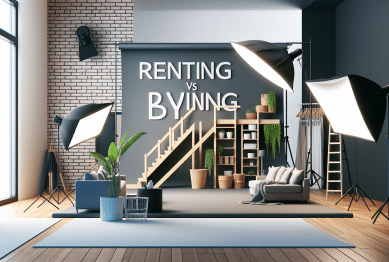Uncover how mortgage rates, property values, and rental demand influence your place in the dynamic real estate landscape. This comprehensive guide helps you make sense of today’s housing shifts, reveals what drives home affordability, and explores practical ways people find their best fit.
Understanding the Forces Behind Housing Prices
Everywhere you look, home prices seem to be on the move. Understanding what shapes these shifts is key. A major factor is mortgage rates. As interest rates rise, borrowing becomes pricier, which can cool demand for homes and put downward pressure on property values. On the flip side, when mortgage rates drop, more people can afford to buy, often fueling price increases. This ebb and flow is a cornerstone of today’s evolving market (Source: HUD User).
But mortgage rates aren’t the only influence. Inventory, or the number of homes for sale, plays a significant role. When supply is limited—like in periods after rapid population growth or housing slow-downs—competition can escalate. This may drive up home prices and create bidding wars. Markets with higher inventory levels tend to see steadier or declining prices, offering buyers more options and negotiating power (Source: National Association of Realtors).
Demand drivers extend beyond basic supply and interest rates. Job growth, local amenities, and even remote work trends now guide how families choose neighborhoods. Areas with good schools, access to parks, and thriving economies usually command higher property values. Recognizing these interconnected influences can empower you to better grasp your place in the housing market and see which factors could tip the balance in your favor.
The Link Between Mortgage Rates and Your Buying Power
For buyers, mortgage qualification is an essential starting point. Rising interest rates affect not only monthly mortgage payments but also the size of the loan one qualifies for. Even a small rate increase can mean a significant difference in your monthly commitment. Potential homebuyers often find their purchasing power reduced when rates rise, shifting focus toward more affordable properties or reconsidering budget priorities (Source: Consumer Financial Protection Bureau).
Lenders look beyond just your income, though. They consider debt-to-income ratios, employment history, and credit scores as part of the application journey. Those with higher credit scores may unlock lower interest rates, which can help stretch budgets and secure more home for the same monthly payment. Understanding how these elements interact reveals why careful financial planning before house hunting can make a world of difference.
There’s an emotional side to this as well. Many prospective homeowners find themselves weighing the desire for space or location against long-term affordability. Market cycles often prompt people to consult with real estate professionals or use online affordability calculators to test scenarios. Everyone’s path is unique, but the math driving homeownership choices connects us all in this dynamic market.
Navigating Supply, Demand, and Rental Dynamics
In cities across the country, rental demand shapes local housing landscapes. When buying becomes less affordable due to high prices or mortgage rates, more people seek rentals—often leading to increased rents and dwindling availability. Investors respond to these trends by shifting strategies, sometimes converting homes to rentals or building multi-family complexes. This supply and demand dance affects how both renters and buyers experience the market (Source: Harvard Joint Center for Housing Studies).
Enter the influence of government policy. Zoning, tax incentives, and affordable housing initiatives impact what gets built, where, and how quickly. For example, changes to zoning codes can unlock new development in previously single-use districts, potentially increasing supply and altering neighborhood character. Policy decisions often have a ripple effect, shaping the types of homes available—from luxury condos to affordable rentals.
At the ground level, these forces are profoundly personal. Some people are driven by the search for rental stability and are drawn to locations with strong tenant protections or predictable lease renewal processes. Others might look for investment opportunities in up-and-coming areas where rental growth is forecasted. Understanding local laws, tenant rights, and projected rent trends empowers people to make more informed housing decisions—even as the larger market evolves around them.
Affordability: Myths, Realities, and Strategies
Housing affordability is a central concern for many, especially first-time buyers. Myths abound—that owning is always more expensive than renting, or that down payments must be huge. In reality, many lenders and nonprofit programs offer assistance with down payments, and new loan types continue to emerge, broadening access to homeownership. Exploring these resources can unveil surprising paths to getting a foot in the real estate door (Source: Urban Institute).
Meanwhile, rent-to-income ratios and housing cost burdens remain hot topics. Experts suggest that ideally, you should spend no more than 30% of your income on housing costs, but rising property values and limited inventory have stretched budgets, especially in urban centers. Innovative housing solutions, such as shared ownership or accessory dwelling units, are being explored to ease affordability pressures, and local nonprofits often provide guidance on these alternative models.
There’s also a creative side to affordability. Homebuyers and renters alike consider location flexibility, seeking homes a bit farther out or in emerging neighborhoods. Others band together, forming co-buying groups or cooperatives. Technology now connects people with housing resources in real-time, whether it’s tracking price changes, navigating grants, or finding affordable listings ahead of the crowd. Affordability remains a challenge, but growing awareness and access to resources spark fresh opportunities for many.
Technology’s Transformative Role in Your Real Estate Experience
Digital advancements are reshaping real estate at every level. Virtual tours make it easier to preview homes without stepping inside, while data-driven platforms help buyers analyze comparable home prices, neighborhood trends, and commute times. This transparency empowers people to make smarter, more confident decisions—and reduces the guesswork associated with major investments (Source: National Association of Realtors Technology Survey).
Mobile apps and online marketplaces have streamlined how properties are listed, discovered, and even negotiated. Users can set price alerts, schedule open house appointments, and connect directly with property managers or realtors. Remote notarization and document signing further speed up closings, transforming even the most traditional steps in home buying or renting. This increased convenience benefits not only tech-savvy generations but also anyone with limited time to house hunt in person.
On the investment side, technology also opens the door to real estate crowdfunding and fractional property ownership. These tools allow more people to participate in real estate markets, diversify investments, or access new income streams with lower entry barriers. As the pace of change accelerates, staying current with these digital trends gives buyers, sellers, and renters a valuable edge.
Neighborhoods and Lifestyle: What Shapes Where People Live
For many, the search for the ideal home extends beyond walls and square footage. Neighborhood attributes—like school quality, walkability, and safety—matter deeply. People are also drawn to areas that offer community connections, robust amenities, and lifestyle conveniences. It’s common to see more buyers and renters considering mixed-use developments, where daily needs are met within a short walk or transit ride (Source: Brookings Institution).
Remote and hybrid work has also influenced where people choose to live. Freed from daily commutes, some opt for suburban or even rural areas, prioritizing space and nature over city-center proximity. This migration can revitalize smaller towns and shift regional property market dynamics. At the same time, urban living appeals to those seeking cultural vibrancy and direct access to work and entertainment.
Ultimately, personal priorities drive housing decisions. Some value peace and quiet, others thrive in bustling neighborhoods. The diversity of lifestyles and communities now available—combined with greater access to real-time information—helps more people identify where their needs, ambitions, and budgets intersect. Finding the right fit isn’t just about cost; it’s about the world you want to shape for yourself and those around you.
References
1. U.S. Department of Housing and Urban Development. (n.d.). Housing Market Trends. Retrieved from https://www.huduser.gov/portal/pdredge/pdr-edge-featd-article-012522.html
2. National Association of Realtors. (n.d.). Research and Statistics. Retrieved from https://www.nar.realtor/research-and-statistics
3. Consumer Financial Protection Bureau. (n.d.). What rising interest rates mean for your mortgage. Retrieved from https://www.consumerfinance.gov/about-us/blog/interest-rates-rise-what-it-means-mortgage-home-loan/
4. Harvard Joint Center for Housing Studies. (n.d.). Rental Housing Demand. Retrieved from https://www.jchs.harvard.edu/blog/demand-rental-housing-picking-again
5. Urban Institute. (n.d.). Barriers to Accessing Homeownership. Retrieved from https://www.urban.org/research/publication/barriers-accessing-homeownership
6. U.S. Environmental Protection Agency. (n.d.). Smart Growth and Sustainable Communities. Retrieved from https://www.epa.gov/smartgrowth/smart-growth-and-sustainable-communities









